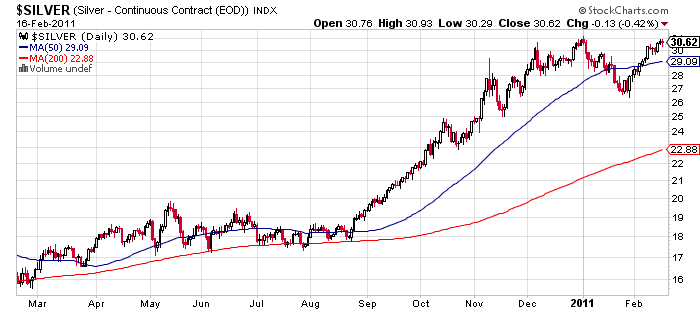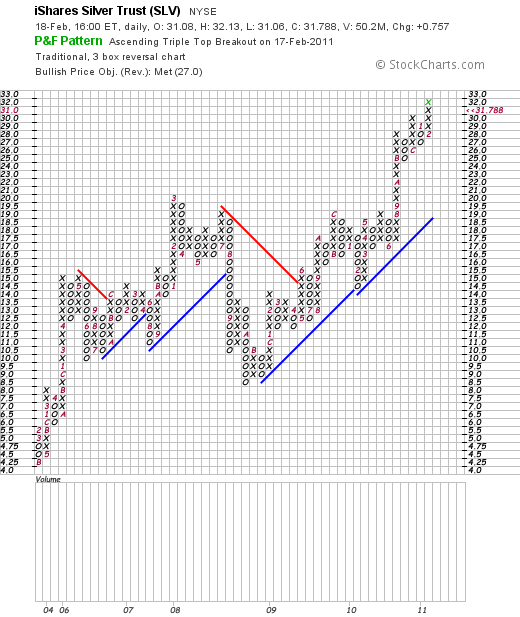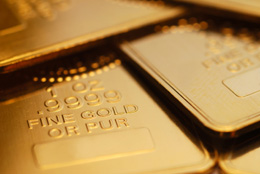 Gold and silver prices, as measured by the London PM Fix Price, moved to new highs on the week.
Gold and silver prices, as measured by the London PM Fix Price, moved to new highs on the week.
Gold, as measured by the closing London PM Fix Price, gained $16 per ounce on the week and hit an all time high of $1,447 on Thursday. After soaring 30% last year, investors still have plenty of reasons to allocate part of their portfolio to precious metals.
| Precious Metals Prices | ||
| Fri PM Fix | Since Last Recap | |
| Gold | $1,436.00 | +16.00 (+1.13%) |
| Silver | $37.68 | +2.53 (+7.20%) |
| Platinum | $1,752.00 | +32.00 (+1.86%) |
| Palladium | $754.00 | +27.00 (+3.71%) |
Silver was once again the standout performer among the precious metals, gaining $2.53 per ounce on the week. The price of silver has now risen by over 10% in the past two weeks and is up from a yearly low of $27 in late January. Silver has far outpaced the gains in gold, which has resulted in a decline in the gold/silver ratio to 38, which is the lowest since late 1983. A return to the long term historical gold/silver ratio would result in silver prices approaching $100 per ounce.

SILVER - COURTESY STOCKCHARTS.COM
The surge in silver prices caused the CME to increase margin requirements on silver futures, which contributed to a pullback in prices on Thursday. The move by the CME was seen by some as a manipulation tactic to bring down the price of silver, but increased margin requirements are common when prices are rapidly increasing. Small and underfunded speculators may have to liquidate, but in the long term silver will merely move from weak hands to strong hands. Increased margin requirements on highly leveraged positions can produce a short term sell off, but it does nothing to change long term fundamentals.
Platinum and palladium, which both lost over 3% last week, gained on the week as fears of reduced industrial demand were eased by estimates of the huge reconstruction cost in Japan. The rebuilding of Japan is likely to result in higher prices for all types of commodities and an increased rate of global inflation.
 As measured by the London PM Fix price, gold and silver prices gained on the week after declining approximately 1% each in the previous week. Gold gained $8.50 per ounce on the week to $1,420.00. Silver was the stand out gainer on the week with a 3% or $1.05 per ounce gain. As the situation in Japan and Libya stabilized somewhat, the recent panic selling in financial markets subsided as bargain hunters moved in, although in late trading, stocks gave up much of their gains. Gold and silver also pulled back slightly in New York trading with gold at $1417.80 and silver at $35.10.
As measured by the London PM Fix price, gold and silver prices gained on the week after declining approximately 1% each in the previous week. Gold gained $8.50 per ounce on the week to $1,420.00. Silver was the stand out gainer on the week with a 3% or $1.05 per ounce gain. As the situation in Japan and Libya stabilized somewhat, the recent panic selling in financial markets subsided as bargain hunters moved in, although in late trading, stocks gave up much of their gains. Gold and silver also pulled back slightly in New York trading with gold at $1417.80 and silver at $35.10.
 Gold and silver prices declined slightly on the week, as measured by the closing London PM Fix prices. Gold finished the week at $1,411.50 for a loss of $15.50 while silver declined fractionally by 33 cents to close at $34.10. However, as markets assessed the impact of a slowing world economy, higher inflation, higher oil prices and the massive earthquake in Japan, prices for gold and silver saw significant price improvement in late Friday New York trading. Gold moved up $9.20 to $1,421.30, while the silver price rose $.60 to $35.90.
Gold and silver prices declined slightly on the week, as measured by the closing London PM Fix prices. Gold finished the week at $1,411.50 for a loss of $15.50 while silver declined fractionally by 33 cents to close at $34.10. However, as markets assessed the impact of a slowing world economy, higher inflation, higher oil prices and the massive earthquake in Japan, prices for gold and silver saw significant price improvement in late Friday New York trading. Gold moved up $9.20 to $1,421.30, while the silver price rose $.60 to $35.90.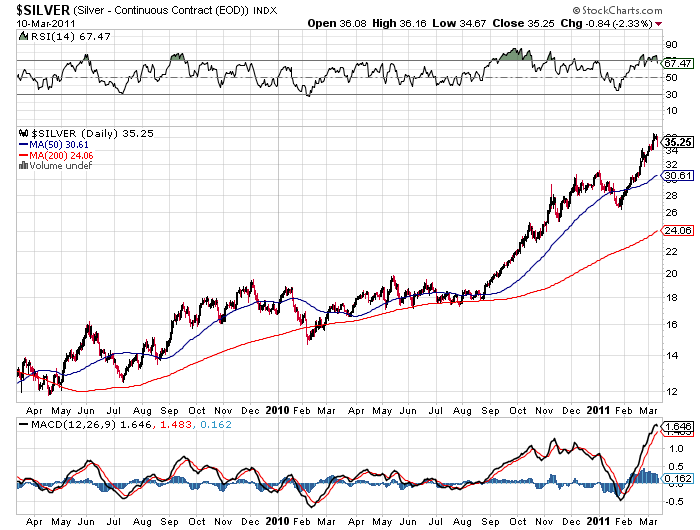
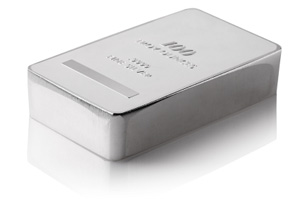 Silver holdings in the iShares Silver Trust (SLV) continued to skyrocket, while holdings of gold in the SPDR Gold Shares Trust (GLD) experienced a modest increase.
Silver holdings in the iShares Silver Trust (SLV) continued to skyrocket, while holdings of gold in the SPDR Gold Shares Trust (GLD) experienced a modest increase.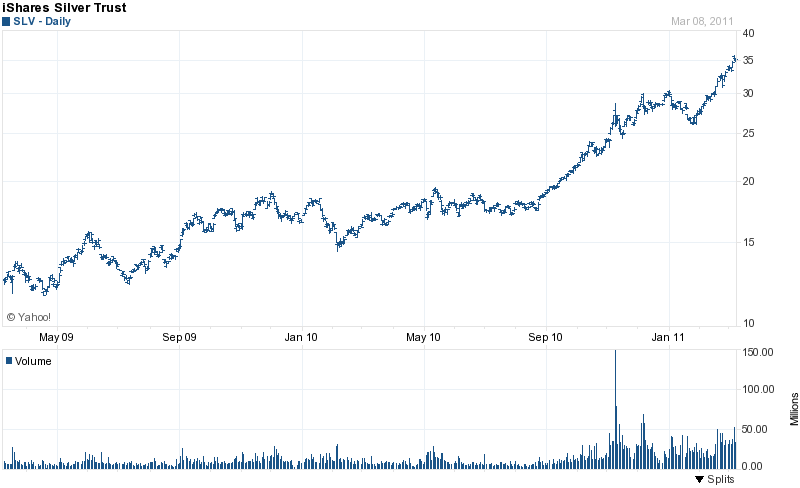
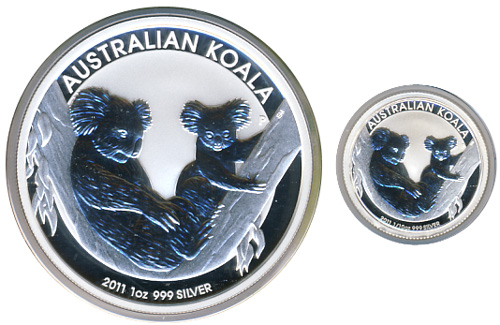 As will generally be the case with silver products, the smaller weight offerings carry a larger premium than than larger weight products. This can be the result of the fixed costs associated with manufacture or volume discounts which may be available for purchases in bulk quantities.
As will generally be the case with silver products, the smaller weight offerings carry a larger premium than than larger weight products. This can be the result of the fixed costs associated with manufacture or volume discounts which may be available for purchases in bulk quantities. The Week in Precious Metals
The Week in Precious Metals
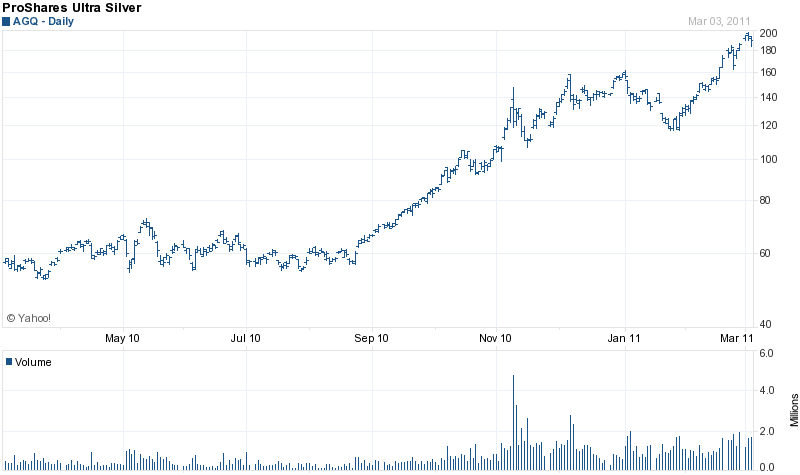
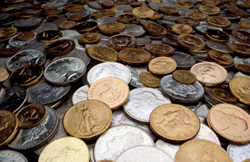 The gold silver ratio chart below shows the dramatic fashion in which silver has been outperforming gold since last August. The gold silver ratio is calculated by dividing the price of gold by the price of silver. A declining gold silver ratio indicates that silver has been outperforming gold. The gold silver ratio has declined from 65 last summer to a current level of 41.
The gold silver ratio chart below shows the dramatic fashion in which silver has been outperforming gold since last August. The gold silver ratio is calculated by dividing the price of gold by the price of silver. A declining gold silver ratio indicates that silver has been outperforming gold. The gold silver ratio has declined from 65 last summer to a current level of 41.
 As turmoil reigned in the Middle East and worries mounted over the reduction of oil supplies, gold and silver proved their safe haven status as both moved higher in price.
As turmoil reigned in the Middle East and worries mounted over the reduction of oil supplies, gold and silver proved their safe haven status as both moved higher in price.
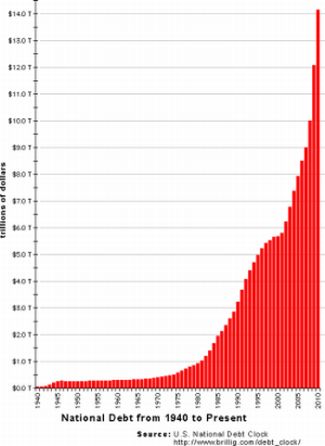
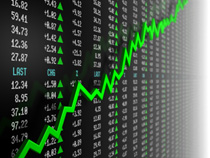 Triple tops are a well known chart formation that signal the potential for a price trend reversal. A classic triple top occurs over a period of three to six months during which prices decline after hitting a series of multiple equal highs. For the reversal pattern to register a definitive sell signal, the price must break below support levels.
Triple tops are a well known chart formation that signal the potential for a price trend reversal. A classic triple top occurs over a period of three to six months during which prices decline after hitting a series of multiple equal highs. For the reversal pattern to register a definitive sell signal, the price must break below support levels.